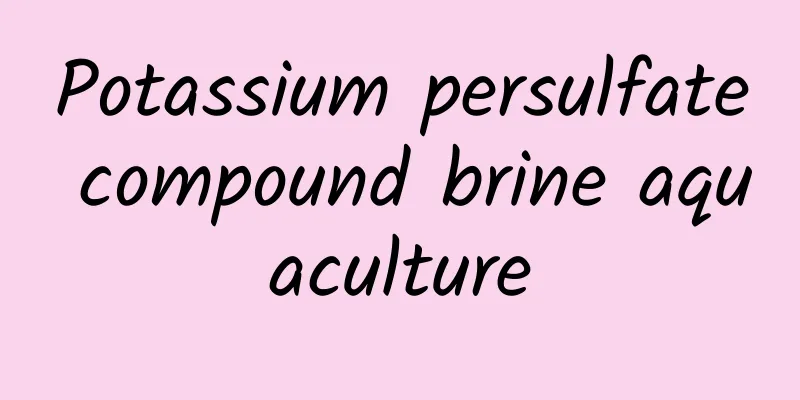What are the common methods of self-treatment for facial paralysis?

|
The main cause of facial paralysis is facial neuritis, which is a non-bacterial, non-suppurative inflammation of the facial nerve. It is a common and frequently occurring disease. Facial paralysis is mostly caused by local wind or cold. So how should facial paralysis be treated? 1. Self-massage 1. Full face massage: The patient should first rub the palms together until they become warm, then place them on both cheeks, pushing and rubbing from bottom to top to between the eyebrows, then spreading apart to the ends of the eyebrows, and then passing in front of the ears and down to the lower jaw. Repeat this process dozens of times until your cheeks feel warm. 2. Acupoint massage: Use lighter techniques to massage the Yangbai, Sibai, Taiyang, Yingxiang, Xiaguan, Jiache, Quanliao, Qianzheng, Dicang, Chengjiang and other acupoints on the affected side; use heavier techniques to massage the Fengchi acupoint on the neck, Hegu acupoints on the upper limbs, and Zusanli, Taichong acupoints on the lower limbs. Massage each acupoint for 0.5 to 1 minute. 3. Pinch the facial muscles: Use one hand to hold the healthy side of the face and apply slight downward force to correct the crooked appearance of the mouth and eyes. Use the other hand to pinch the facial muscles on the affected side by following three lines and one circle. The three lines refer to Chengjiang-Yifeng, Dicang-Tinggong, and Yingxiang-Taiyang. When pinching, press the thumb and index finger on two acupoints respectively, and then apply gentle force and slowly close them towards the middle. Repeat this many times until the stiff facial muscles become soft and flushed. One circle means using the middle finger and ring finger to slowly circle around the affected eye socket, repeating this many times. 2. Rehabilitation training of facial muscles After the facial expression muscles on the affected side begin to move, effective facial expression muscle rehabilitation training can significantly improve the therapeutic effect. The main facial muscles affected in facial paralysis are the frontal belly of the occipitofrontalis muscle, the orbicularis oculi muscle, the levator labii superioris muscle, the zygomaticus muscle, the levator anguli oris muscle, the orbicularis oris muscle and the quadratus labii inferioris muscle. Functional training of these main muscles can promote the restoration of normal motor function of the entire facial expression muscles. During training, the following treatment methods should be selected according to the patient's different symptoms. Train 2 to 3 times a day, and train each movement 10 to 20 times. The specific training methods are as follows: 1. Eyebrow lifting training: The patient lifts the eyebrows on both the healthy and affected sides, which helps to restore the eyebrow lifting motor function. 2. Eye closure training: The patient should gently close his eyes at the beginning, and close both eyes at the same time for 10 to 20 times. If the eyelids cannot be completely closed, the patient can use the tip of the index finger to gently massage along the lower edge of the orbit when the whites of the eyes are exposed, and then close the eyes forcefully for 10 times. This will help restore the eyelid closure function. 3. Nose-lifting training: A small number of patients do not know how to do the nose-lifting exercise. During training, they should pay attention to applying force towards the nose. 4. Tooth display training: The patient's mouth corners move to both sides at the same time to avoid exerting force on only one side to form a habitual deflection movement of the mouth corners. 5. Mouth pouting training: When doing mouth pouting training, contract your lips forcefully and pout your mouth forward. Use force when pouting your mouth. After the orbicularis oris muscle recovers, the patient will be able to puff out his cheeks, and the symptoms of leaking water while brushing teeth or drooling while eating will disappear. When training pursing the lips, the motor functions of the levator labii superioris, quadratus labii inferioris and mentalis muscles are trained at the same time. 6. Cheek puffing exercise: When air leaks from puffing your cheeks, pinch the orbicularis oris muscle on the affected side up and down with your hands to perform cheek puffing exercise. The patient was able to perform cheek puffing exercises, indicating that the motor functions of the orbicularis oris and buccinator muscles could return to normal, and the symptoms of water leakage while brushing, drooling, and food stagnation disappeared. This method helps prevent and treat contracture of the quadratus lip superioris muscle. |
<<: What is a mild cerebral infarction? How to treat
>>: What are the common symptoms of kidney deficiency in men?
Recommend
How to treat chest tightness, tips for daily conditioning
I don’t know if you have ever had this experience...
Pigeon breast surgery sequelae
Pigeon chest is a disease that refers to the defo...
Why do I feel dizzy when I wake up in the morning?
If you always feel dizzy when you wake up in the ...
Can patients with cervical spondylosis use air conditioning?
You can turn on the air conditioner even if you h...
Can the lymph nodes under the arm be massaged?
Can the axillary lymph nodes be massaged? Many pe...
What to do if you have acne on your arms
It is also common to have acne on the arms. If yo...
Eye mucus
People always ignore various small details in lif...
Precautions for burns in summer
The weather in summer is quite hot, but burns are...
Symptoms and professional treatment of oculomotor nerve palsy
Oculomotor nerve paralysis is not uncommon. If th...
What is the cause of the blisters on the body? You need to know the treatment method
Herpes is a skin disease caused by a virus that c...
What is the function of complex amino acid protein powder?
The reason why we humans stand at the top of the ...
What diseases can biochemical blood tests detect?
Biochemical examination is a relatively routine e...
The difference between prosthesis and expanded body
With the development of society, people's req...
How to determine your skin type
There are many characteristics of human skin, suc...
Can eating walnuts raw nourish the kidneys?
Walnuts have many nutritional benefits. For men, ...









